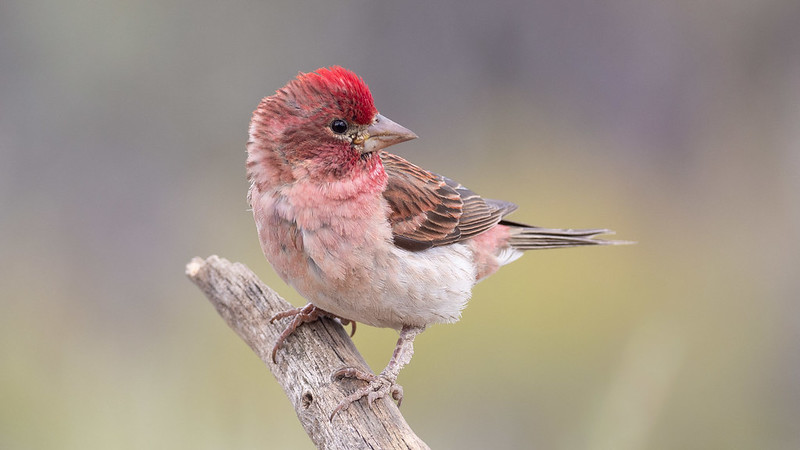Cassin’s Finch (Haemorhous cassinii) is a small finch with a forked tail, fine streaks, and pale eyering. Males also have rose-pink plumage and a white belly.
This species is fairly common in coniferous forests and dry, montane habitats in western North America.
Pairs of rosy-pink and pale streaked finches in the Rocky Mountains and other western, montane habitats are probably this species. Watch for them picking up seeds off the ground, calling from Aspens, and visiting feeders.
Did you ever wonder how to see and identify this pretty bird? Learn all about Cassin’s Finch in this article!
On this page
Identification
The male Cassin’s Finch is a pretty songbird with a velvety red crown, and rosy-pink highlights on its chest, flanks, and back. It has a short crest or “peaked crown”, fine streaks on its back and on the back of its neck, and some fine streaks on its lower flanks and undertail. They also have a couple of thick, dark marks on their face, two pale pink wing bars on their long wings, and a forked tail.
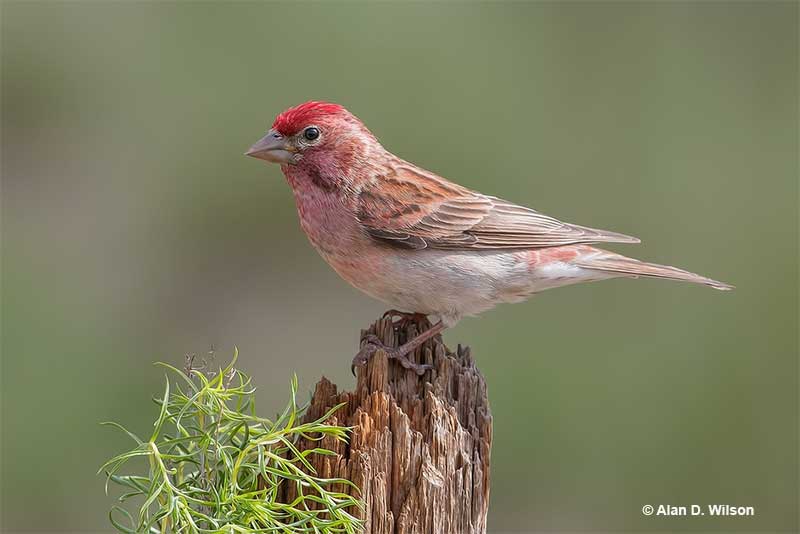
Male Cassin’s Finch
Female Cassin’s Finches and young males are shaped like adult males but, otherwise, look nothing like them. They don’t have any red in their plumage, are pale, gray-brown above, and white below with fine, dark streaks. They also have a pale eyering, fine streaking in their pale eyebrows, and two pale wing bars.
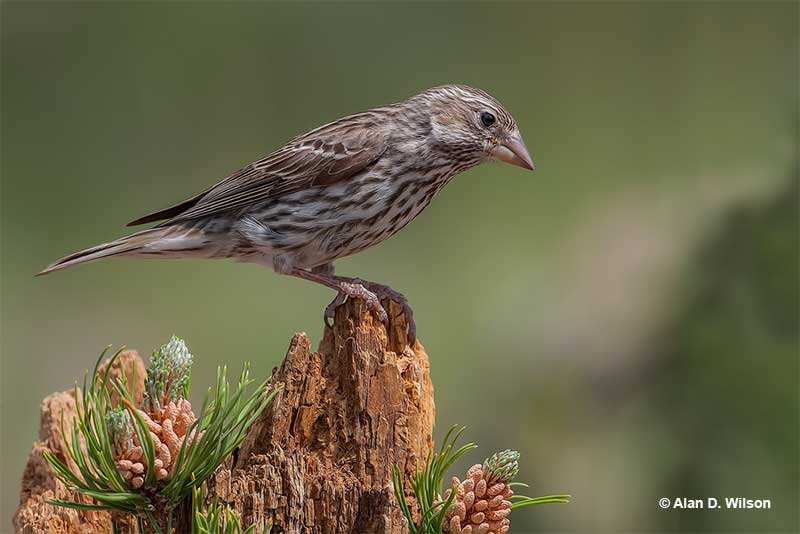
Female Cassin’s Finch
Both sexes of these sparrow-sized finches are the same size and are around 6.25 long, have a wingspan of 11.5 inches, and weigh .91 ounces.
One of the other field marks for the Cassin’s Finch is its sharp, somewhat narrow, conical beak. We usually see these birds in pairs or small flocks as they call from treetops and fly over forest and brushy habitats.
In flight, like most other finch species, Cassin’s Finches seem to bound up and down as they move through the air.
Food
Cassin’s Finches eat lots of seeds, tree buds, fruit, and some insects. Like many birds, what they eat depends on what’s available at certain times of the year, but seeds probably make up the largest part of their diet.
In winter and spring, this finch feeds on the buds of Cottonwoods, Aspen, Green Manzanita, and other tree species. It can take them directly from the trees as well as pick them up from the ground. During cold months, they also feed on the seeds of Ponderosa Pines and various other types of plants. They can pick those seeds from open cones while perched, and also pick them up from the ground.
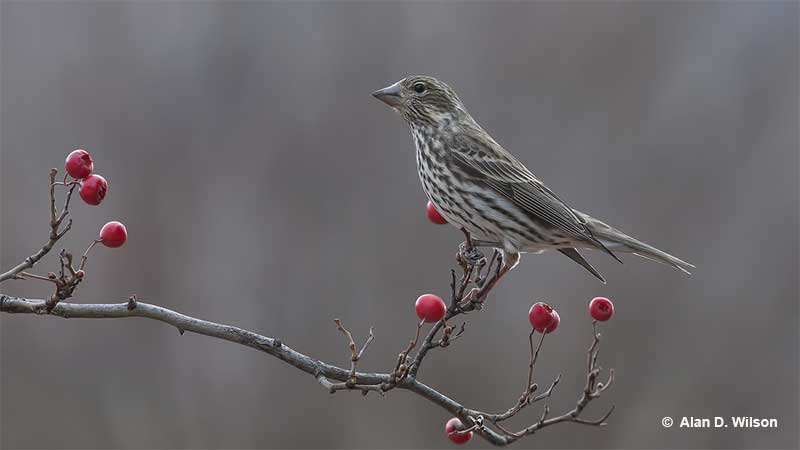
The Cassin’s Finch can also feed at feeders, although it doesn’t show up as much as some other birds. If you want to attract them, try putting out sunflower seeds. They seem to be their favorite!
In summer, Cassin’s Finches still eat seeds but also take caterpillars from the foliage of conifers and other vegetation.
These small birds pick up most of their food from the ground and usually feed in pairs or small flocks. While foraging on the ground, these birds also commonly eat salt and bits of dirt that have a high mineral content.
Nesting and Eggs
Cassin’s Finches form pairs in late winter and early spring but don’t start nesting until May or June. The female finch does all of the nest building while her mate keeps watch for predators and protects their territory from other male Cassin’s Finches.
She uses twigs, stems, rootlets, lichens, and other bits of vegetation to craft a loose cup nest either right at the top of a conifer, or high up on a side branch, well away from the trunk. The female lines her nest with plant fibers, animal hair, feathers, and other soft matter and finishes it in just three days!
Once the nest is finished, the mother bird lays three to six pale green, 0.9-inch long eggs with red-brown and purple markings. She incubates them for 12 days or two weeks while her mate brings her food and watches for predators.
After the eggs hatch, both parents feed the babies by regurgitating food directly into their beaks. Although no detailed studies have been made about their nesting behavior, the babies probably hatch after ten to twelve days, and leave the nest after another ten days.
The young birds flock with and continue to be fed by their parents for some time after that.
Current Situation
The Cassin’s Finch breeds in coniferous forests and other montane habitats in southern British Colombia, in the Rocky Mountains, and eastern Washington south to California and northern Arizona. It also winters at lower elevations in much of the same area, to southern California, and south to central Mexico.
This species is listed as Least Concern in the IUCN Red List and is uncommon to fairly common in many parts of its range.
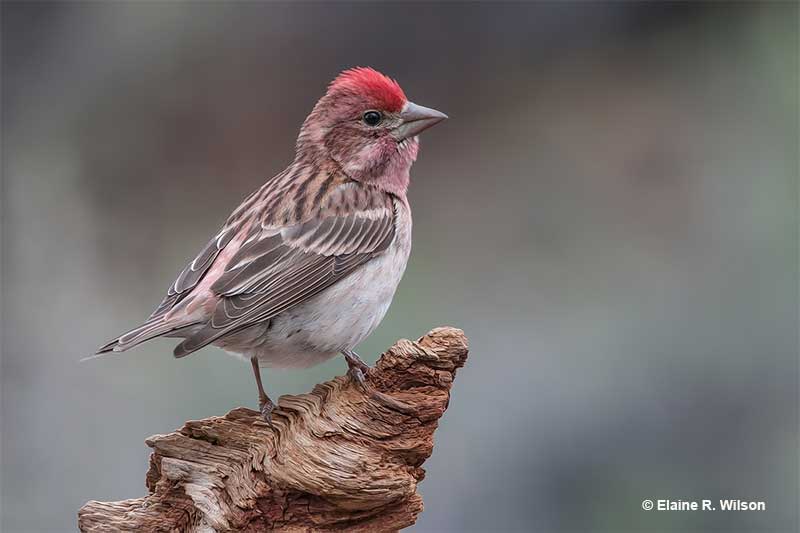
The Cassin’s Finch is currently not considered to be threatened because it has a stable population of 3,000,000. However, not that long ago, this species was declining year after year and considered to be Near Threatened.
Finding the causes for these declines has been a challenge, but the main reason could be prolonged drought in large parts of its breeding and wintering range. Fortunately, feeders can help this species, and it may also benefit from sustainable logging.
Facts
- Male Cassin’s Finches sing a complicated, warbling and twittering song that often includes bits of calls and songs of other bird species.
- The Cassin’s Finch was named after John Cassin, a 19th century ornithologist. After seeing the first scientifically collected specimens of this species, he asked his friend and fellow ornithologist, Spencer Baird, to name the bird after him.
- Female Cassin’s Finches do not sing, but birders sometimes believe they see singing females. This is because young males sing even though they resemble female birds and have streaked, pale brown plumage.
- This species often nests in loose, well-spaced colonies. On occasion, they build nests within three feet of each other, and the males can end up fighting until one of them gives up.
- Cassin’s Finches often nest in one place and then switch to another area the following breeding season. Although no one knows why they do this, these movements are probably related to certain food sources being available that help them raise their young.
- This species and the related House and Purple Finches look a lot like rosefinch species from Eurasia. However, they are more closely related to the rosy-finches that live in high, cold mountain habitats of North America.
Similar Species
The Cassin’s Finch is a distinctive bird in many parts of its range but it does look quite similar to a few other species. However, with a good look, we can identify and separate these birds from each other.
House Finch
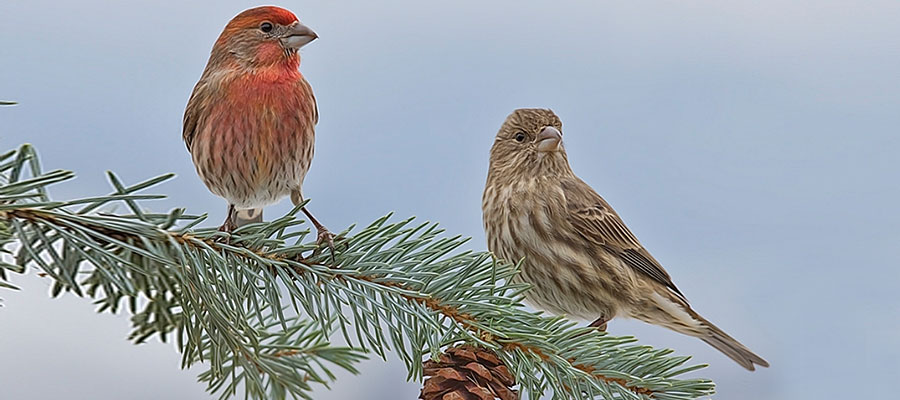
This related bird has a lot of similarities to the Cassin’s Finch but tends to live in lower and drier habitats. The easiest way to separate them is by looking at the shape of the bird’s head and its beak. The House Finch has a more rounded head and short, rounded bill, whereas the Cassin’s Finch has a short crest, and a sharper, longer, more triangular beak.
Related: 17 finch species you can see in the U.S.
The male House Finch also has two white wing bars and heavier streaking on its flanks. The male Cassin’s Finch, though, has pinkish wing bars, and sparse, finer streaking on its flanks. Female Cassin’s Finches are also paler and have finer streaking than the female House Finch.
Purple Finch
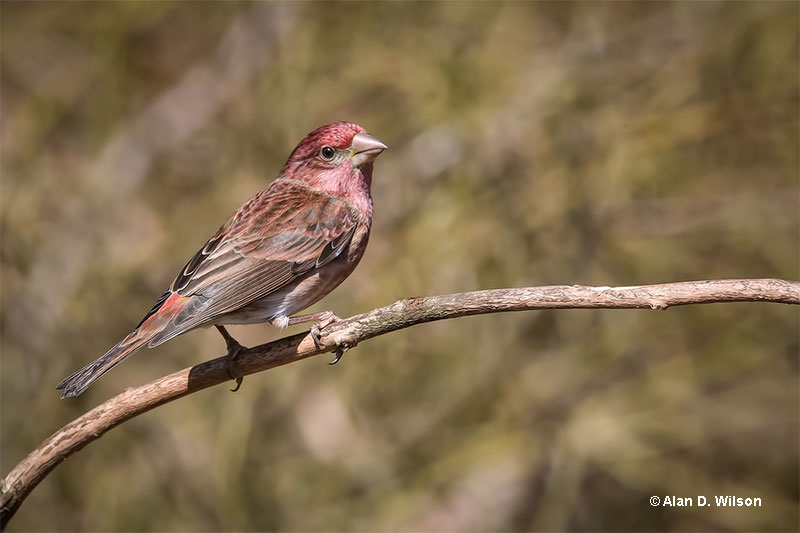
Although Purple Finches look even more similar to Cassin’s Finches, they rarely occur together. In all plumages, the Cassin’s Finch is a paler bird, has a pale eyering, and finer streaks than the Purple Finch. Cassin’s Finches also have a sharper, slightly longer beak.
Pine Grosbeak
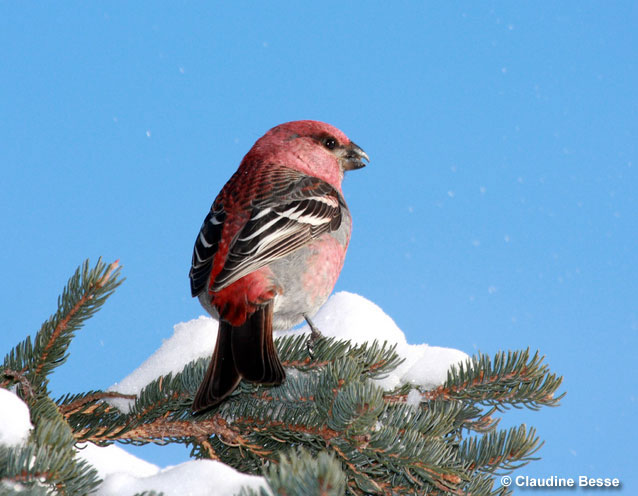
This mountain bird breeds in some of the same places as the Cassin’s Finch, and the male Pine Grosbeak also has reddish coloration. However, the grosbeak is a larger, robin-sized bird with a more rounded, black beak.
It also has blackish wings with two white wing bars, and a gray belly and undertail.
Frequently Asked Questions
What is the difference between a House Finch and a Cassin’s Finch?
The difference between a House Finch and Cassin’s Finch is that the House Finch lives at lower elevations in drier and more urban habitats. House Finches also have more rounded beaks and thicker streaks.
Where are Cassin’s Finch found?
Cassin’s Finch are found in coniferous forests in the Rocky Mountains, other parts of the western USA, and in British Colombia.
What is the size of a Cassin’s Finch?
The size of a Cassin’s Finch is similar to that of a large sparrow. They are 6.5 inches long.
Do Cassin’s Finches migrate?
Yes, Cassin’s Finches migrate, especially birds from the northern part of their range. They winter in lower elevations, and can migrate to mountains in central Mexico.
What does a Cassin Finch sound like?
A Cassin’s Finch sounds like a warbling songbird that has a fast, complicated twittering song. It also makes a “tiddleedip” call.

